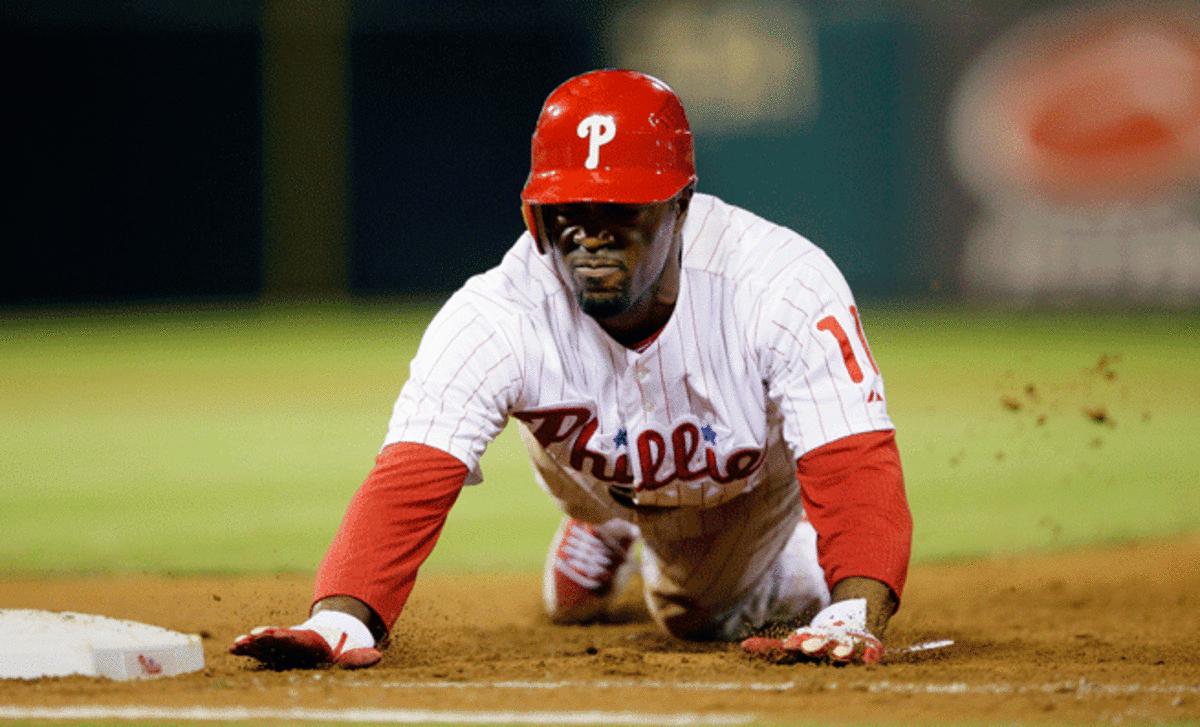
In Oakland and cities across the country, baseball a forgotten game

Jimmy Rollins honed his game on the playgrounds of Oakland before going on to star for the Phillies, but few young athletes in his old neighborhood want to follow in his footsteps.
/AP
School's out on a sunny Friday afternoon in downtown Oakland, and teenagers head to Mosswood Park. Mosswood holds a hallowed spot in the city's pickup basketball lore; it's one of the places where the young Bill Russell, Gary Payton and Jason Kidd, among others, honed their games. But Oakland has just as much of a baseball tradition -- Frank Robinson, Joe Morgan and Rickey Henderson all spent their formative years in the city. There is no question which sport is king now, though. Some of the kids walk across a vacant baseball diamond to get to the busy courts, wearing old sneakers and carrying their prized hightops. The last thing they want to do is smudge their basketball shoes with baseball dirt and grass.
Similar scenes play out across the country every day, particularly in largely African-American neighborhoods like Mosswood. A generation of black youth has bypassed the diamond on the way to basketball courts and football fields, which is why the percentage of African-American players in the major leagues has been in steady decline. Last season it dipped to 8.8 percent, down from 19.0 percent in 1995, according to the Institute for Diversity and Ethics in Sport. In Major League Baseball's continuing effort to reverse that trend, commissioner Bud Selig announced last week that he was creating a diversity task force.
If the kids at Mosswood are any indication, there is bad news for the 17-member panel, which includes Morgan and Robinson, White Sox executive vice president Kenny Williams and former Mets manager Jerry Manuel -- it might be too late to get that lost generation back into the fold. "I used to love baseball," says Pierre Payne, a baby-faced 16-year-old, as he laces up his red-and-black Nikes. "Played all the time when I was a kid." Like many of the teens at Mosswood, Payne was part of the Junior Giants youth baseball program for a year or two. And now? "Now I'm out here," he says. "This is where everybody is. Can't play [baseball] by yourself."
As he talks, Pierre keeps an eye on the courts, where there is raw athletic talent in abundance. In another era the lean, muscular teenager leaping above everyone to snatch a rebound might have become a centerfielder scaling a wall to steal a home run. Give them gloves and plant them on either side of second base, and the two guards trading drives to the hoop could easily be turning a double play. But baseball just isn't on their radar. Pierre's buddy, 18-year-old Keon Taylor, considers himself a fan of the Raiders, Warriors and A's, but asked to name someone on the A's roster, he comes up blank. "I don't really watch all that closely," he says. "It's more like something that might be on in the background."
The ineffectiveness of baseball's efforts to market its African-American stars is evident here. Phillies shortstop Jimmy Rollins is from Oakland, and Yankees pitcher CC Sabathia is from nearby Vallejo, but when Pierre and Keon are asked to name a black baseball player off the top of their heads, they hesitate, then almost in unison say, "Barry Bonds." When I show them a picture of Pirates centerfielder Andrew McCutchen, one of the top young black players in the game, they can't name him. One of the older men waiting to play takes a quick look, points out McCutchen's thick braids, and they all agree he looks like Arizona wide receiver Larry Fitzgerald.
"We've all heard the reasons for what's going on," says Williams. "The ad campaigns of the other sports, the ease of playing basketball as opposed to baseball, where you need more equipment and more people. We've lost a lot of kids who might have been playing and watching baseball. But there are also 210,000 kids in our RBI [Reviving Baseball in Inner Cities] program, and over the next four years you'll probably see that number double."
Maybe the most encouraging news the young ballers at Mosswood have for baseball executives is that it isn't the game itself that has driven them away. "People say it's slow, but I don't have a problem with that," Keon says. "Sometimes that's what makes it tense, waiting for something big to happen." It's more that basketball in particular has a cachet that baseball can't match. "You watch an NBA game and Jay-Z might be there, Lil Wayne, Common," says Keon. "You watch a baseball game and it's nothing like that."
Of course, nowhere is it written that a certain level of African-American interest in baseball is a necessity. If young black men are drawn to other sports, so be it. (In fact, they're not the only ones leaving baseball: One study showed that youth participation dropped 24 percent from 2000 to '09.) Still, there's something not just ironic but also sad in the notion that 66 years after Jackie Robinson fought so hard to gain a foothold in the big leagues, fewer black athletes seem interested in taking advantage of that access. But Pierre and Keon can't discuss that right now. They're done talking baseball. The pickup game they've been keeping an eye on is over, and they've got next.


































